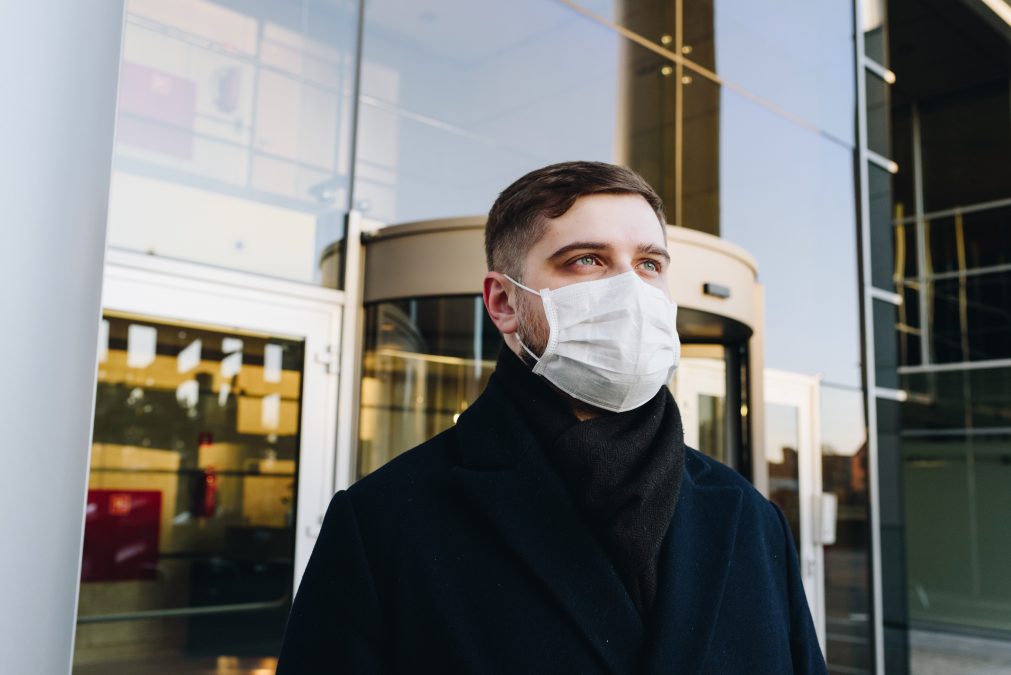HR Leaders can play a strategic role in shaping and promoting a safety culture to influence positive, healthy outcomes.
Every office across America is grappling with the immediate need to reconfigure and re-purpose space in anticipation of worker’s return to the office. Leadership teams and facility managers are appropriately focused on several facets of risk mitigation to provide safe landings for their employees.
Look to the Industrial Sector as a Model
Utilities and manufacturers have long understood the difference between a safe workplace and a vibrant safety culture. The processes these industries engage in, the machinery operated, and the environment workers live in all represent hazards warranting a no nonsense, paramilitary approach. In those settings, one wrong move can become a matter of life and death if safety procedures are bypassed.
The successful organizations within those industries focus on an entire belief system surrounding safety. Behavior-Based Safety Systems ensure safety becomes a shared value rather than simply another set of rules to follow or (on occasion) procedures employees choose to circumvent.
Safety in the office historically focused on ergonomics, which will continue to be an element of a plan but shouldn’t begin and end there. In the early stages of return-to-work initiatives, employees will need to familiarize themselves with new surroundings. Logistics involved with navigating the rules of the road for the “one-way paths” currently under construction may be part of the orientation. But familiarizing your returning employees with the new office set up represents only step one in protecting people from harm.
Humans are Creating a Unique Safety Challenge
Here’s the real key to why a safety culture matters in these turbulent times. Traditionally, companies have conducted risk assessments by taking inventory of infrastructure, observing work processes, determining hazards, and then drawing up a risk mitigation plan.
The unique situation we now face lies in the fact that the biggest hazard in a COVID world is actually our fellow humans! Not only are we hosts and transmitters of this disease, but we can also be unpredictable, emotional, even uninformed. This makes for a potentially fatal combination unless safety awareness and beliefs are developed as part of an entire value ecosystem. On the other hand, employees who assist in protecting others and demonstrate your company’s values can become an incredible asset and THE solution to the problem.
Building a risk management plan for COVID-19 in the workplace involves changing and then observing behavior in the office. Once employees exit the office, you can neither monitor nor control their actions.
This is not a proposal for “Big Brother” Orwellian methods to track individuals and data, but rather an acknowledgment of the unique challenge of containing the threat. A balanced approach will be needed to monitor actions and reinforce behavior within the context of respect for employee’s personal space.
COVID-19 is a little-understood virus. Our call for the responsible action of carriers (i.e. our fellow employees) who make the spread possible is currently our only line of defense. Here’s how to arm your company by adapting lessons learned from those industries who have already faced their share of clear and present dangers.
Build a Behavior-Based Safety System
“Until effective vaccines exist, the best disease prevention tactics are to change our behavior. Behavior-based safety systems leverage the power of social support to change behavior.” said Cloyd Hyten, Director of Safety Solutions for Aubrey Daniels International, a behavior-focused management consulting company.
Old habits are hard to break, and new habits are equally difficult to start and most importantly, to maintain. Our natural instincts will be at odds with the new rules of engagement upon our return to work. No handshakes. Maintain distance. Keep touch of objects to a minimum. Cover faces with masks. That makes for a tall order requiring a new mindset that only a robust behavior-based safety system can deliver on.
Every manager must ask themselves if they believe COVID-19 is virulent and poses a real threat. If there is a fundamental disbelief of that threat among the ranks of management, any safety program will be dead on arrival. Conduct one-on-one conversations with those managers whose views on the real threat COVID poses diverge from your leadership’s views and confirm their commitment to your safety culture.
Consider the Structure Needed and Take the Time to Build It
- Address Safety on a Strategic Level
Review the company’s mission and value statements to determine if you’ve adequately addressed the company’s commitment as well as the employee’s responsibility to safety in a COVID world. Tone at the top always matters.
“A casual or inconsistent attitude towards safety is noticed by employees and no handbook, signage or occasional training efforts will provide the cure unless safety is part of the leadership’s DNA” says Donald F. Peters, Jr. Principal of Donald F. Peters, Jr, Ltd, in Burr Ridge, IL, concentrating its legal practices in assisting management with employment relations matters in both union and non-union environments.
- Ensure Adequate Resources Are Available
Subject matter experts will be required to inform an organization’s decisions around building an entire safety culture. Are inhouse resources available or will external consultants be needed to build out your plan?
- Start an Employee Safety Council
A program that is self-directed is much more powerful than using a top down approach.
Assemble a cross-functional team to provide education and information on CDC guidelines, state and local guidelines. Partner with the team to determine the specific behavior change programs that will be implemented.
Employees will then meet on a regular basis to check progress, resolve issues, and recommend any needed changes. The most innovative ideas will come from those who literally live and die by the parameters set.
Complete the circle of communication and have a representative from the Employee Council attend leadership meetings at some regular frequency, especially in the early return-to-work phases.
- Educate and Train Managers and Supervisors
The missionary work always falls on the shoulders of front-line managers. If management is currently working from home, start conducting safety and behavior change training NOW.
- Refresh Onboarding of Current Employees and New Hires
Treat everyone as “new hires” when it comes to setting expectations surrounding the new world they will be walking into at your place of business. Set the stage and schedule orientation meetings over the first few weeks of their return.
Reinforcement Comes in All Shapes and Sizes
- Edit handbooks to Include the Company’s Safety Philosophy
Ensure you maintain a consistent message of the company’s commitment to safety as well as the employee’s responsibility to play their part. Reinforce their need to social distance, to follow good hygiene practices, and to minimize the touching of surfaces.
A critical message to include in the handbook emphasizes the importance of acting responsibly at work and home.
Include a disciplinary statement addressing actions you’ll take for repeated or willful infringements of safety practices. If an employee’s actions are placing the lives of others at risk, what will your response be?
“It’s critical to set parameters around safety. After you’ve completed a risk analysis, you may have to adjust your existing policies, including attendance, paid time off, remote work, staggered work hours, clock in/out procedures, leave and travel policies.” said Brendan Nicholls, SHRM-SCP, President of HRA of Greater Oak Brook, IL SHRM Chapter.
- Screen Future Hires for Their Views on Safety
Update selection criteria to determine candidate’s views on safety to ensure alignment with your mission and value statements. Add interview questions to include: “What will you do to ensure you and your co-workers have a safe place to work?” “What would you do if you saw a manager engaging in an unsafe practice?” Get a clear idea of a candidate’s position before you hire them. Don’t leave their answers to chance. The results could be devastating.
- Good Safety Behavior Should Be Rewarded
Employees need recognition from both peers and managers for their disease prevention behaviors. Acknowledgement of those behaviors can be as simple as providing feedback for their positive actions.
Isolation has deprived us of human interaction as well as many of the simple pleasures in life. Additional restrictions on people’s movement, coupled with fear of re-entry into the workplace already trigger anxiety. Consider creating engaging exercises to promote safety culture and add some levity. Perhaps a contest for an employee wearing the most creative mask?
- Promote Your Safety Program from Inside and Outside Your Organization
Use every available channel to get the word out. Start with a more robust website-add videos of your redesigned workplace, include employee testimonials attesting to the safe environment an employee can expect upon their arrival.
Do not rely solely on high unemployment rates to result in a robust pool of candidates. Your ability to attract new talent is also dependent upon the positive images your company can portray of a safe work environment. Consider a new social campaign rebranding the focus on safety culture. The next (and bigger) challenge will be living up to the new standards set.
Make it Habit Forming
Consider any long term change you have ever attempted; losing weight, quit smoking, living a more moderate life. All these goals can be met in the short term (and often are). The only way permanent change happens is when practice becomes habit.
OSHA, Worker’s Compensation, and CDC provide the regulatory guidelines reinforcing the principles of a program, but the real driver will be what’s inside each of us.
#FlattenTheCurve is not a once and done exercise. As we have discovered over the last few months, it takes discipline, patience, and adaptability to square off with the pandemic. Significant societal changes have been tested and will continue to be tested.
Your health and the financial health of your organizations provide the lifeline for all successful back-to-work plans. Now is the time to get employees on board and prove we’re truly all in this together.


